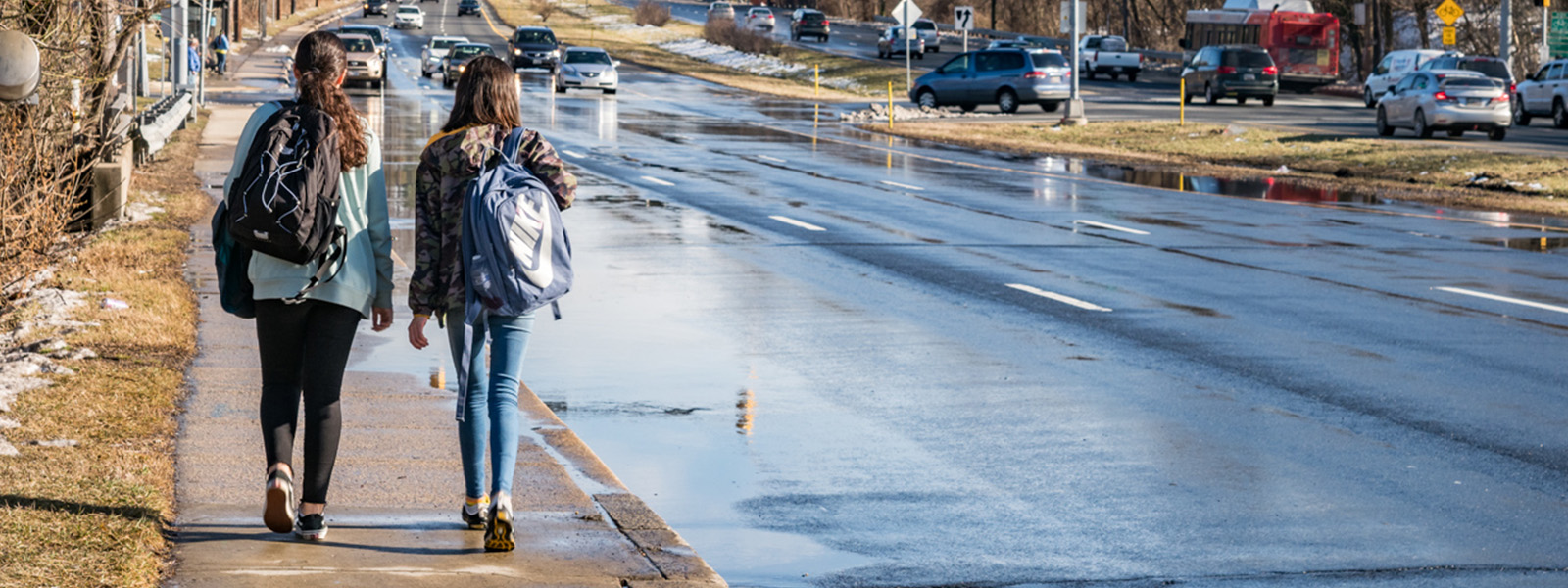
Planners will brief Planning Board on potential safety measures for pedestrians, cyclists and motorists in Aspen Hill to reduce traffic fatalities and injuries
SILVER SPRING, MD – The Montgomery County Planning Department will present the Aspen Hill Vision Zero Study to the Montgomery County Planning Board, part of The Maryland-National Capital Park and Planning Commission, on Thursday, November 14, 2019 at 7:30 p.m.
As part of this session, planners invite members of the community to testify about their experiences walking, biking, driving and taking transit in the Aspen Hill study area and their thoughts on the proposed toolkit to eliminate traffic fatalities and improve safety for pedestrians, bicyclists and drivers. A Spanish language interpreter will be available at the meeting. Children are welcome; coloring sheets and markers will be available. To testify at the Planning Board meeting on November 14, sign up online.
View the Aspen Hill Vision Zero Study Draft.
Launched in 2018, the Aspen Hill Vision Zero Study identifies existing barriers to safety and explores ways to improve conditions in the area defined by commercial developments near Georgia Avenue, Connecticut Avenue and Aspen Hill Road; the area south of Bel Pre Road between Georgia and Connecticut Avenues; and the area south of Aspen Hill Road between Georgia Avenue and Parkland Drive, north of Matthew Henson State Park.
The study was informed by a vigorous community engagement process, work sessions with a community advisory group, consultation with county and state transportation and safety officials, and research into speed and crash data. Montgomery Planning used this information to develop a toolkit of safety strategies, including the following:
- Install speed cameras to enforce speed limits and reduce crashes.
- Reduce speed limits along busy corridors, such as Connecticut Avenue, Bel Pre Road, Aspen Hill Road and Grand Pre Road.
- Provide high-visibility crosswalks on all approaches at traffic-controlled intersections.
- Install pedestrian median refuges at major intersections.
- Relocate school bus stops from major roads to residential streets or shopping centers, civic buildings or religious institutions.
- Narrow interior travel lanes to 10 feet and curb lanes to 11 feet on Georgia and Connecticut Avenues.
- Employ right turn on red restrictions to prioritize pedestrian movements.
- Implement left turn protection measures to slow vehicle turning movements.
For a complete list of recommendations, visit the study website at www.montgomeryplanning.org/aspenhillvisionzero.
For more information, call lead planner Maren Hill at (301)-650-5613 or email Maren.Hill@montgomeryplanning.org.
Montgomery Planning’s Commitment to Vision Zero
Vision Zero is a proven strategy to prevent transportation-related deaths and severe injuries. This policy represents a fundamental change in thinking about roadway planning and design priorities. It changes the focus from vehicular mobility to safe mobility for all people regardless of their mode of transportation.
Engineering, education and enforcement can help us anticipate human error to save lives and reduce the frequency and severity of crashes.
Through its 2016 resolution, Montgomery County committed to creating a Vision Zero environment to eliminate traffic fatalities and severe injuries.
Montgomery Planning is also committed to Vision Zero — to putting safety first for all people in all communities, whether they’re on foot, on bicycles, in cars or using transit. As the agency charged with creating a long-term vision for the county, Montgomery Planning has a unique role to play in engaging the community to re-envision our auto-oriented roadways as safe, complete streets.
Montgomery Planning has been incorporating safety into master plans for some time. Vision Zero offers an opportunity to step up these efforts. As safety increasingly becomes a central focus of planning efforts, we can look for ways to save lives by reducing speeds, decreasing the chance for collisions and recommending land use changes, especially on suburban and arterial roadways.
When well implemented, plans can support Vision Zero by changing our built environment from one that is dominated by cars and focused on traveling quickly over long distances to one that is equitable for all users, regardless of transportation mode, and one that prioritizes life and safety.
Whether applied to an urban, suburban or rural area, Vision Zero policy fundamentals are the same: saving lives means reducing speeds and decreasing the chance for collisions.